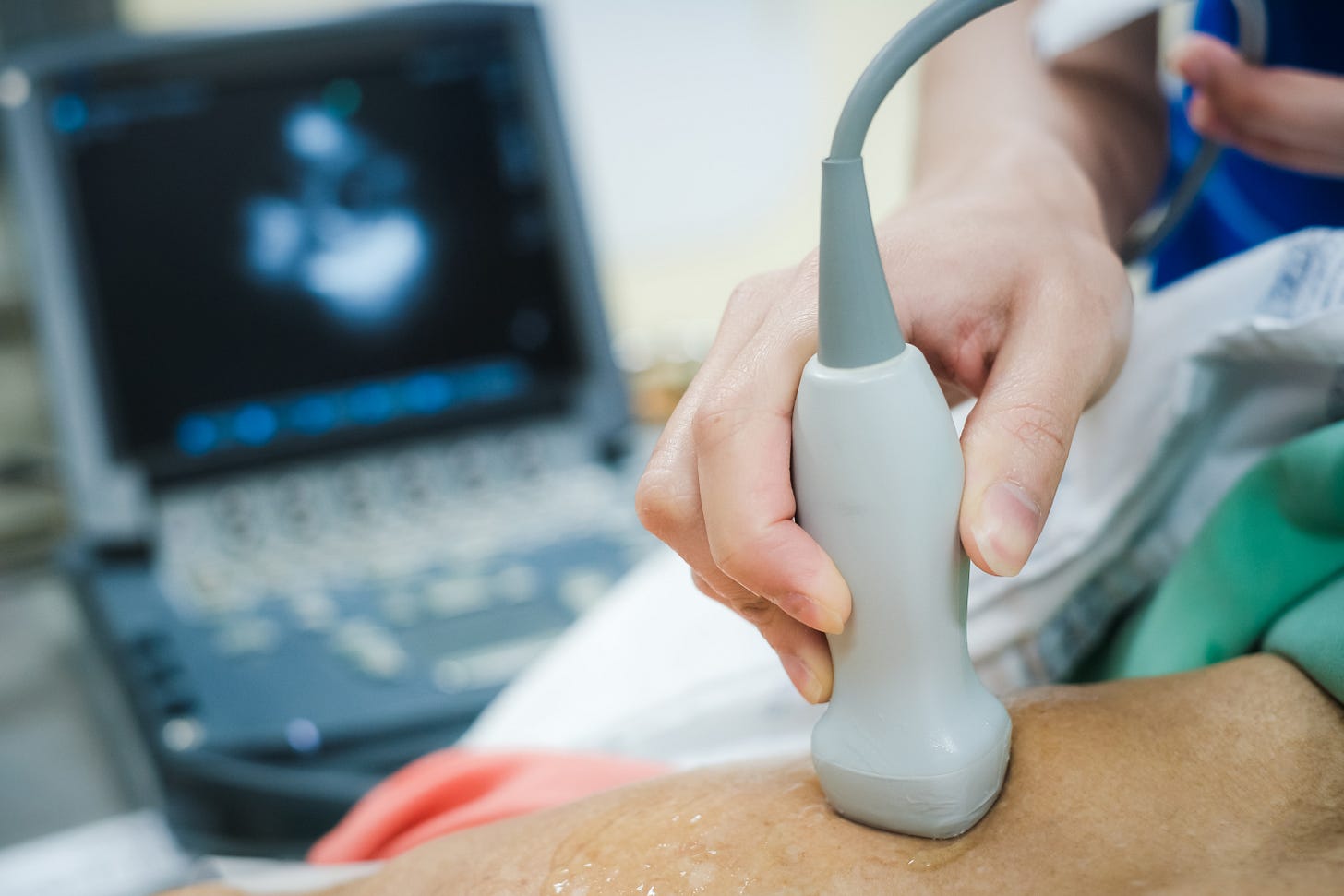NEW GUIDELINE: Ultrasound should be used to manage almost all critically ill patients
If you're not using ultrasound, are you meeting the standard of care?
By providing a noninvasive way to rapidly assess physiology at the bedside, ultrasonography seems to hold the potential to revolutionize the practice of critical care.
Many of its expert proponents would say it already has.
In February 2025, the major U.S. critical care society issued a guideline update authored by a cadre of those experts, recommending bedside ultrasound should be used to help manage the vast majority of critically ill patients.
They specifically suggested bedside ultrasound be used in patients with:
Septic shock
Acute dyspnea or respiratory failure
Cardiogenic shock
These conditions affect most patients admitted to ICUs; if followed, the new advisement would usher in a new standard in critical care.
What drove the society to make this significant change to its 2016 ultrasound guidelines? Because the evidence demanded it, they explained:
“Despite the exponential growth and use [of ultrasound in EDs and ICUs], we are uncertain of its effect on patient-important outcomes. Hence, we aimed to update the guidelines by developing evidence-based recommendations related to clinical outcomes via a rigorous evaluation of the evidence.”
Ultrasound Saves Lives, Speeds Diagnoses and Vent Weans (?)
Based on its literature search and evidence review, the committee made several claims about ultrasonography (which they call CCUS):
Ultrasound saves lives in sepsis. (“Our analysis suggests that CCUS confers a small mortality benefit in septic patients.”)
Ultrasound reduces the duration of mechanical ventilation.
In dyspnea or respiratory failure, ultrasound results in reaching the correct diagnosis faster.
These claims have significant implications:
If they are true, then ultrasonography should be the care standard, and all the physicians who are not proficient in ultrasound are providing inferior care.
Some patients with septic shock are literally dying because of their physicians’ lack of proficiency with ultrasound.
All untrained physicians should immediately schedule and attend an ultrasonography course, and integrate their new skills into their daily practice. If they don’t, they’re not taking the best possible care of their patients.
Hospitals should require all clinicians working in ICUs and EDs to demonstrate and maintain ultrasound skills.
Patients and their families should check their doctors’ online profiles to ensure they have these minimum necessary skills.
Clinicians’ proficiency in ultrasound would become relevant to plaintiff attorneys when considering whether and how to litigate malpractice cases.
New certification authorities should oversee critical care ultrasound nationally, or internationally, to ensure consistency of standards and the validity of the new credentialing processes.
This all might impose some inconvenience or expense, but it will be well worth it—it’s a simple matter of professionalism, and lives are at stake.
The committee alluded to its support for standardization of training and certification in ultrasonography:
“In the application of these guidelines, we assume that practitioners performing CCUS have appropriate equipment, training, and competency, supporting the need to better standardize CCUS training and quality assurance.”
Now that we understand the issues, let’s look at the evidence the authors found for ultrasound’s benefits, to justify this major (although only “suggested”) change in clinical practice.
Claim: Ultrasound Reduces Mortality
Using ultrasound in the ED or ICU saves patient lives: this is by far the most important assertion.
Is it true?
As the authors stated, many new studies have been performed since the last guideline update in 2016 to help answer this question.
Keep reading with a 7-day free trial
Subscribe to PulmCCM to keep reading this post and get 7 days of free access to the full post archives.



